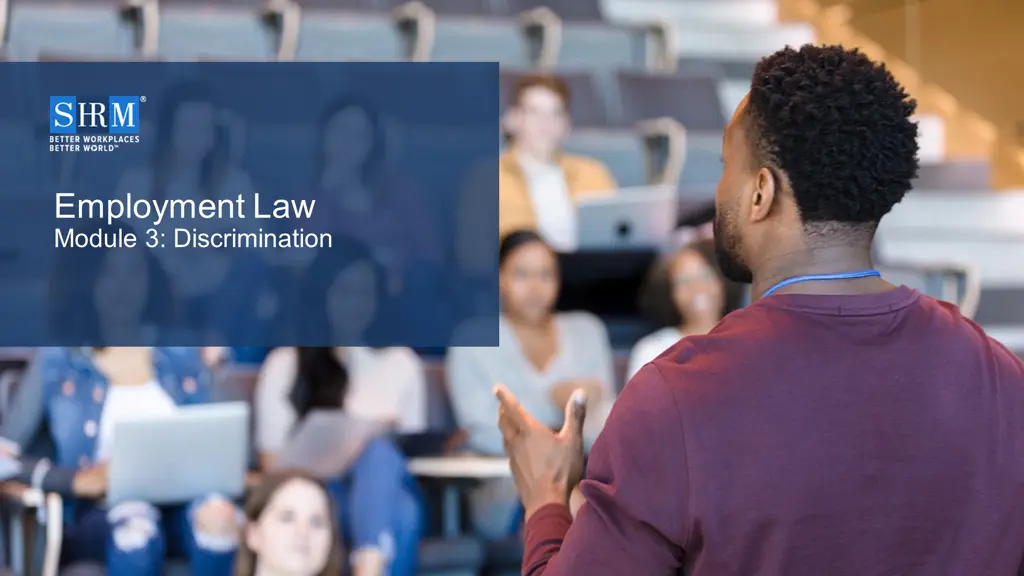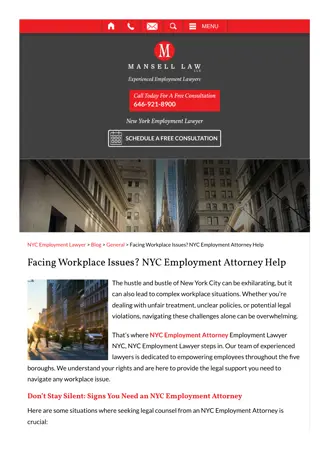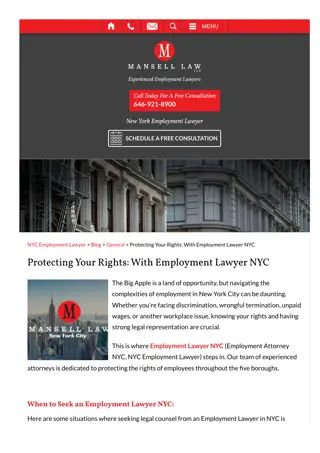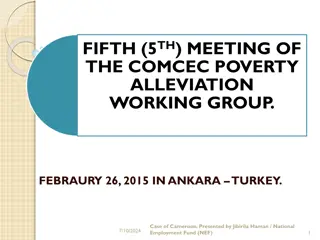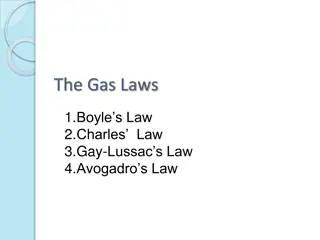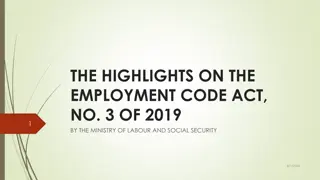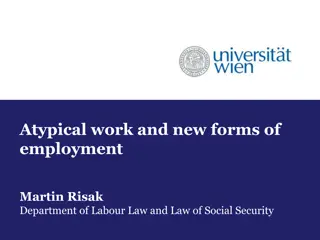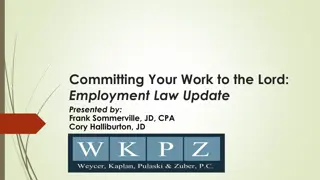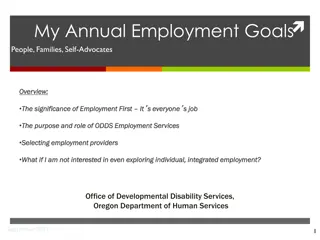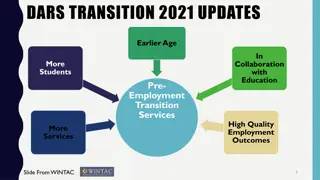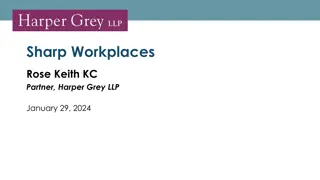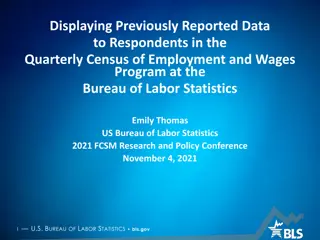Employment Law
Discrimination in employment, including the key terms, applicable laws, disparate impact and treatment, BFOQ, filing complaints, and more.
Download Presentation

Please find below an Image/Link to download the presentation.
The content on the website is provided AS IS for your information and personal use only. It may not be sold, licensed, or shared on other websites without obtaining consent from the author. Download presentation by click this link. If you encounter any issues during the download, it is possible that the publisher has removed the file from their server.
E N D
Presentation Transcript
Employment Law Module 3: Discrimination
Learning Objectives Define the key terms related to Discrimination Determine the appropriate laws to apply to given employment situations. Differentiate between disparate impact and disparate treatment. Discuss how bona fide occupational qualifications are applied in the workplace. Identify various types of discrimination. Recognize the appropriate steps for filing a complaint when employment rights are violated.
Key Terms 1. Adverse action 2. Back pay 3. Bias 4. Bona fide occupational qualification (BFOQ) 5. Bona fide seniority 6. Business Necessity 7. Circumstantial evidence 8. Compensatory damages 9. de minimis 10.Direct evidence 11.Discrimination 12.Disparate Impact 13.Disparate Treatment 14.English-only rules 15.Essential job function 16.Genetic information 17.Genetic testing 20. Major life activity 21.Ministerial exception 22.National origin group or ethnic group 23.Prima facie case 24.Protected class 25.Punitive damages 26.quid pro quo sexual harassment 27.Retaliation 28.Right to sue letter 29.Reasonable accommodation 30.Regarded as having an impairment 31.Religion 32.Sex discrimination 33.Sex-plus discrimination 34.Stereotypes 18.Harassment 35.Undue Hardship 19.Hostile work environment
Discrimination Discrimination is any adverse action that takes place against any employee that is a member of a protected class.
Types of Discrimination Genetic Race Color 1.Define Information 2.Any exceptions or other types? Disability Sex Discrimination 3.What does this mean for Employers? National Age Origin Pregnancy
What is Bias? Bias is the conscious or unconscious treatment of certain individuals in either a positive or negative fashion that is driven by another individual s pre-conceived ideals, attitudes, and practices and based on a factor unrelated to an individual s ability to perform job duties.
Stereotypes A stereotype is a belief or attitude that all persons of a certain race, sex, nationality, religion, or other groups of people share a common trait. This belief influences actions towards applicants or employees.
Bonafide Occupational Qualification Allows employers to base some employment decisions for a particular position on normally protected categories such as sex, religion, or national origin.
Enforcing Employment Laws Evidence What do you do? Time Limits File a lawsuit Exceptions After the EEOC reviews the facts of each case Age Discrimination in Employment Act You need to file a charge within 180 calendar days from the day the discrimination took place Follow the established policies of the employer for filing a complaint Direct Evidence Policies and practices of the employer. A right to sue letter is a letter from the EEOC Equal Pay Act Employee is free to go directly to HR or a higher- level supervisor to make the complaint May be extended to 300 calendar days Circumstantial evidence Prima Facie Case the Equal Employment Opportunity Commission
Remedies for Employment Discrimination Back Pay An employer will also have to stop discriminatory actions and take preventative actions to ensure that it doesn t happen again. Compensatory damages Punitivedamages
In the Spotlight Case Law 1.Why isn t race included in the bona fide occupational qualification exception to Title VII s prohibition of discrimination? 2.Provide an example of when it would be appropriate to apply the BFOQ exception to an employment situation not involving race. 3.Have you ever experienced discrimination in the workplace? 4.If you d like, share your experience and discuss the legal aspects of why the actions were discriminatory. If you ve never felt discriminated against in the workplace, write about a friend or family member who has felt that way.
